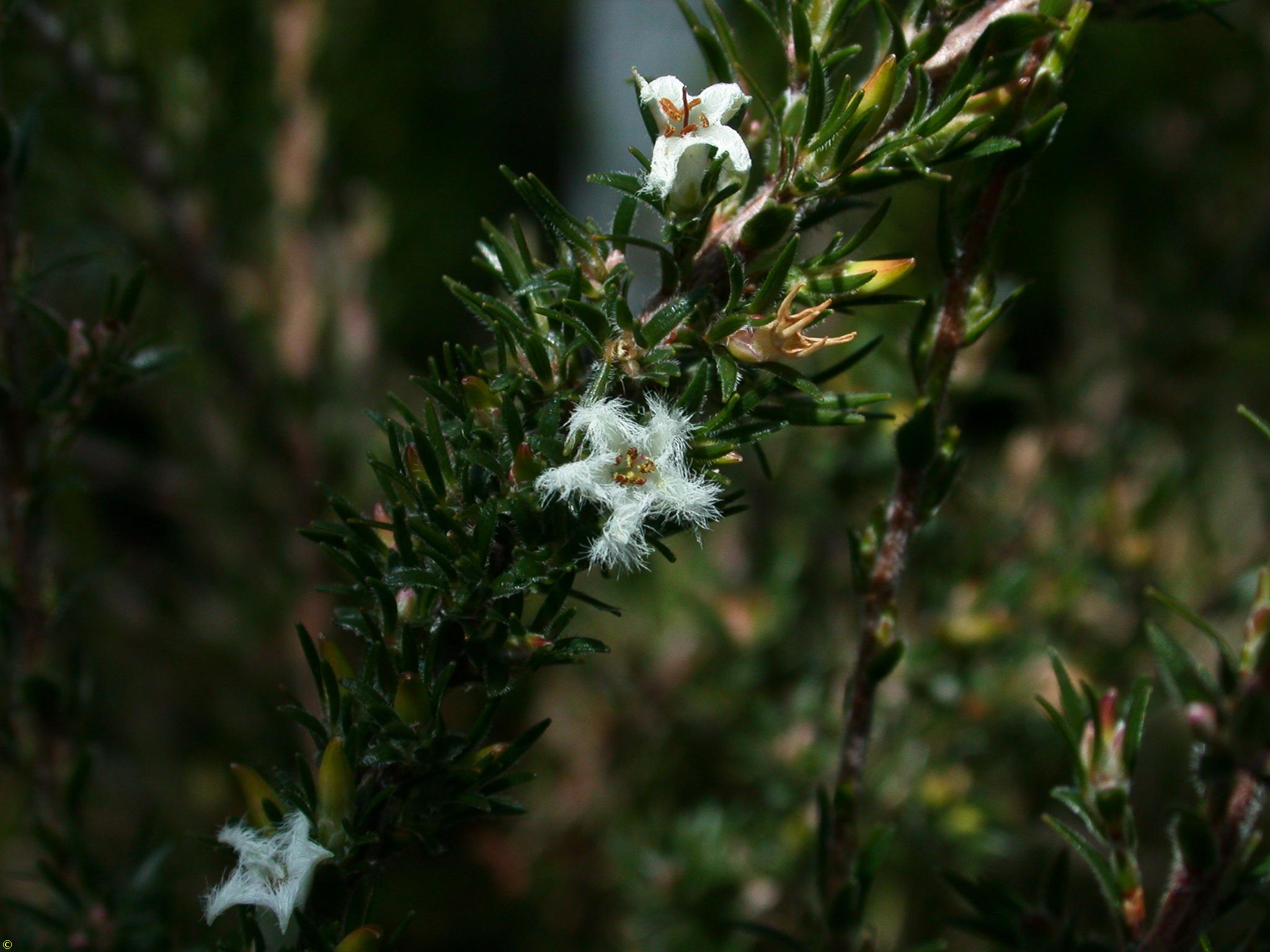Scientific Name: Pentachondra ericifolia Endemic Having a natural distribution confined to a particular geographic region
Common Name: fine frillyheath
Family Classification (Clade): Eudicots
Family: Ericaceae
Threatened Species Status: Rare
Permit: It is an offence to collect, disturb, damage or destroy this species unless under permit.
Form Description: Small heath-like shrub, dwarf, spreading to erect with hairy young growth.
Height (m): 0.15 – 0.6
Flowers: White, solitary, near ends of branches. Short scattered hairs on outside of corolla tube.
Fruit: Drupe – small, splitting into 5 parts when ripe.
Municipality
Plant Communities
Habitat Notes
Found in alpine and sub-alpine habitats of the Central Plateau and at Mr. Dromedary. Requires acidic soils which do not dry out readily. Hardy to frost and snowfalls.
Site Tolerance
Exposed, Moist, Windy
Soil Tolerance
Fertile, Loam, Nutrient-poor, Well-drained
Frost Tolerance
Hardy
General Notes
Rare in cultivation. Will require exceptionally good drainage in acid soils which do not dry out. Has potential for use in rockeries in temperate regions. A well-composted soil is essential and care should be taken to prevent plants from drying out. A sunny site will enhance flowering.
Propagation Calendar
-
Flowering Month
Jan Feb Mar Apr May Jun Jul Aug Sep Oct Nov Dec -
Seed Collecting Month
Jan Feb Mar Apr May Jun Jul Aug Sep Oct Nov Dec -
Sowing Month
Jan Feb Mar Apr May Jun Jul Aug Sep Oct Nov Dec -
Cutting Month
Jan Feb Mar Apr May Jun Jul Aug Sep Oct Nov Dec
Propagation Method
Seed Information
Seed Collection
Difficult to propagate from seed collected from plants.
Seed Treatment Method
Fermentation Collect fleshy fruits in a plastic bag, mash up and allowed to ferment to replicate digestion by a bird.
Seed Treatment Notes
Seeds are said to germinate better after passing through a bird.
Cutting & Division Information
Propagate from cuttings using very soft young growth. Particular care should be taken when handling because they develop long, fine roots.
